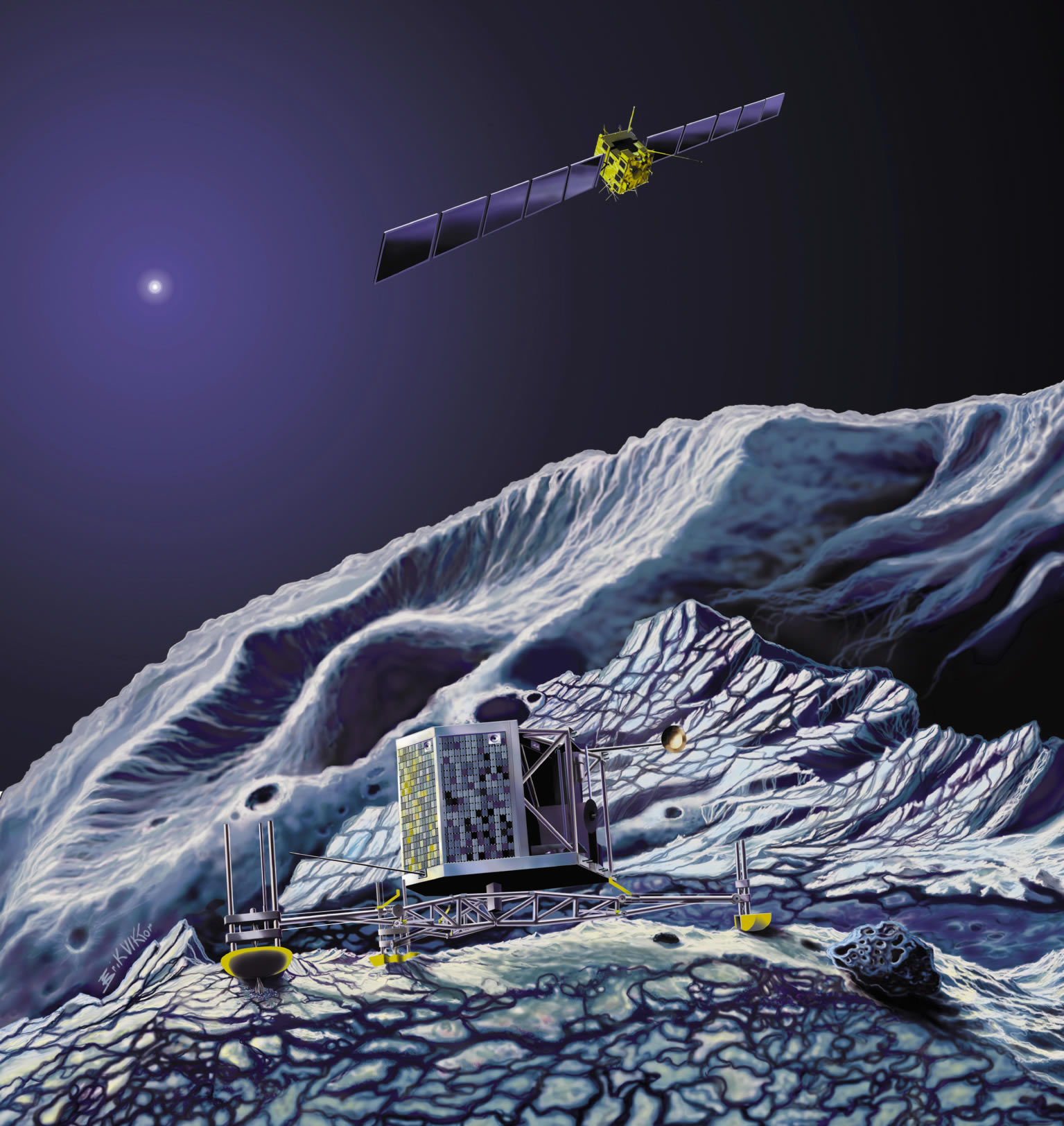Time to wake up, Rosetta!
10 January 2014
Rosetta, ESA’s comet-chasing mission, will wake up from a deep-space hibernation at 10:00 GMT on 20 January! Launched on 2 March 2004, it is on its way to Comet 67P/Churyumov-Gerasimenko, which it should reach by May 2014.
Over a year ago, when it had travelled some 800 million kilometres from the Sun, Rosetta was put into deep-space hibernation. The spacecraft was oriented so that its solar wings were facing the Sun to receive as much sunlight as possible, and it was placed into a slow spin to maintain stability.
Now, as both the comet and the spacecraft are on the return journey back into the inner Solar System, the Rosetta team is preparing for the spacecraft to wake up.
Rosetta’s internal alarm clock is set for 10:00 GMT on 20 January 2014.
Once Rosetta wakes up, it will first warm up its navigation instruments and then it must spin down to point its main antenna at Earth, to let the ground team know it is still alive.
In early May, Rosetta will be 2 million km from its target, and towards the end of May, it will execute a major manoeuvre to line up for rendezvous with the comet in August.
The first, although distant, images of the comet are expected in May. When closer in, Rosetta will take thousands of images that will provide further details of the comet’s major landmarks, its rotation speed and spin axis orientation.
This will be the first time we will be able to analyse a comet over an extended period of time, and not just during a fly-by! This will give us a unique insight into how a comet ‘works’ and ultimately help us understand the role of comets in the formation of the Solar System.





